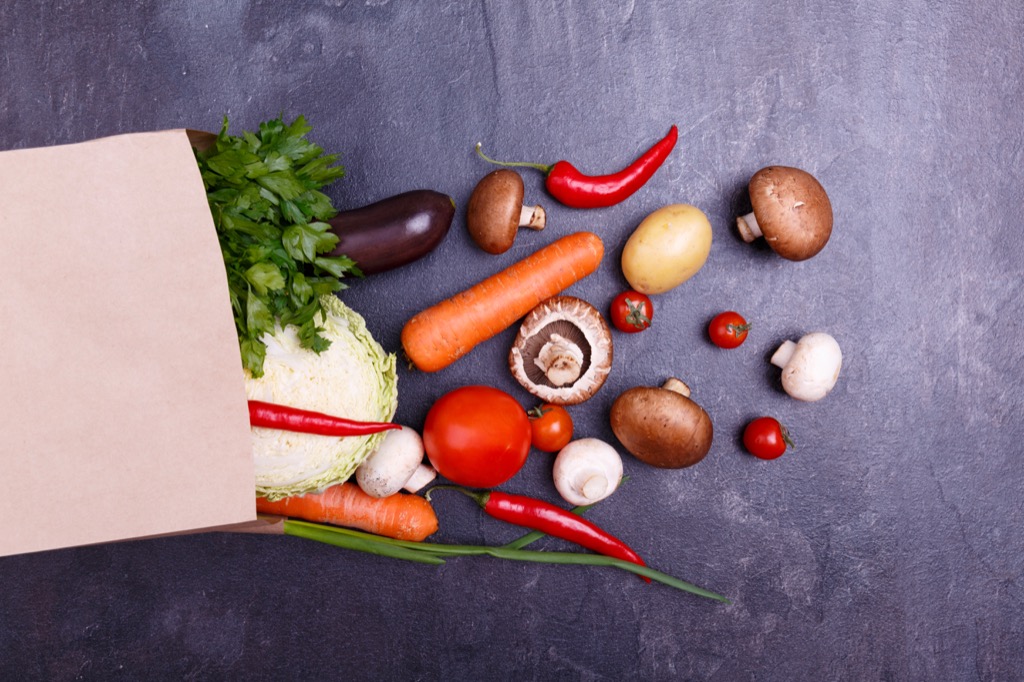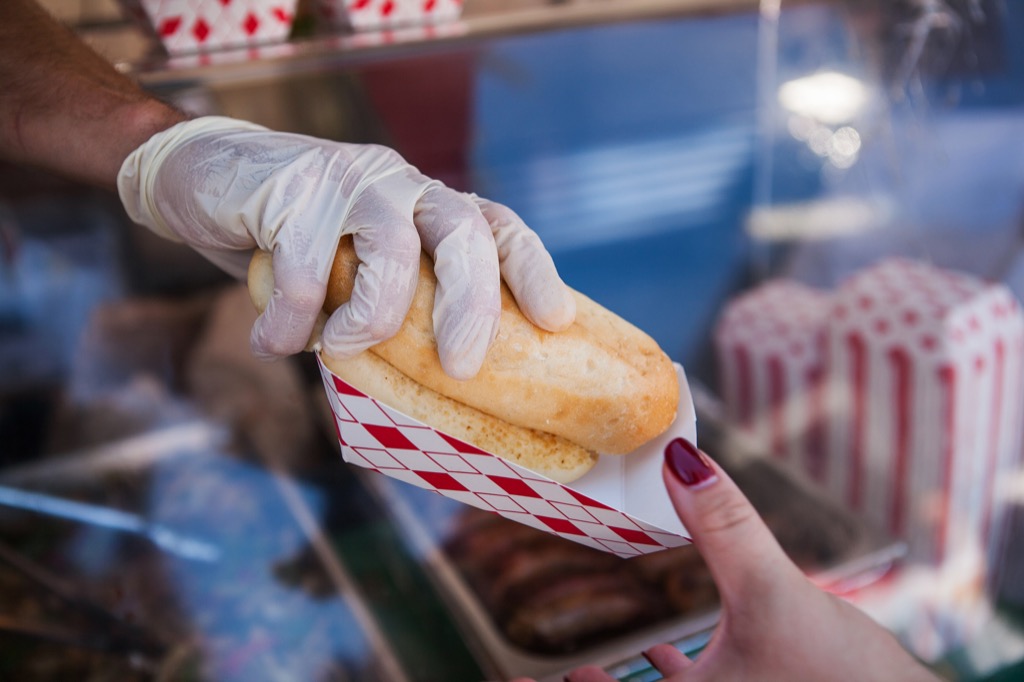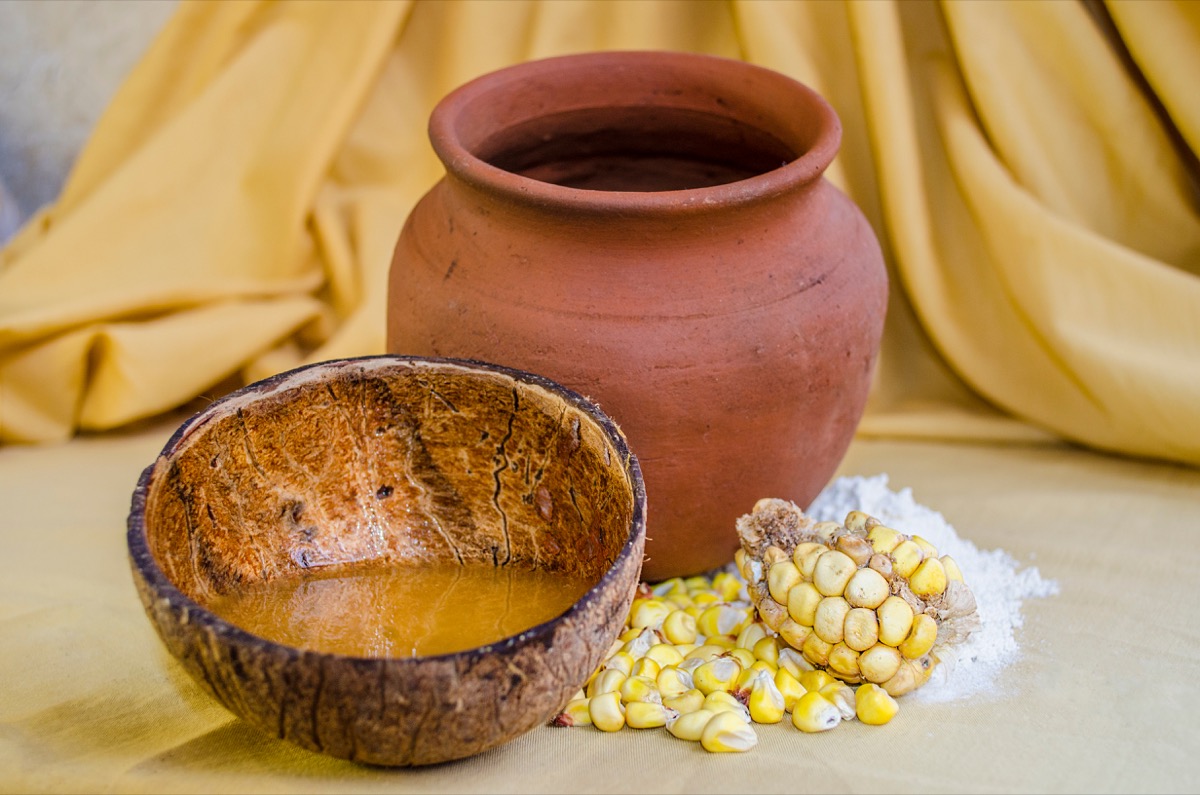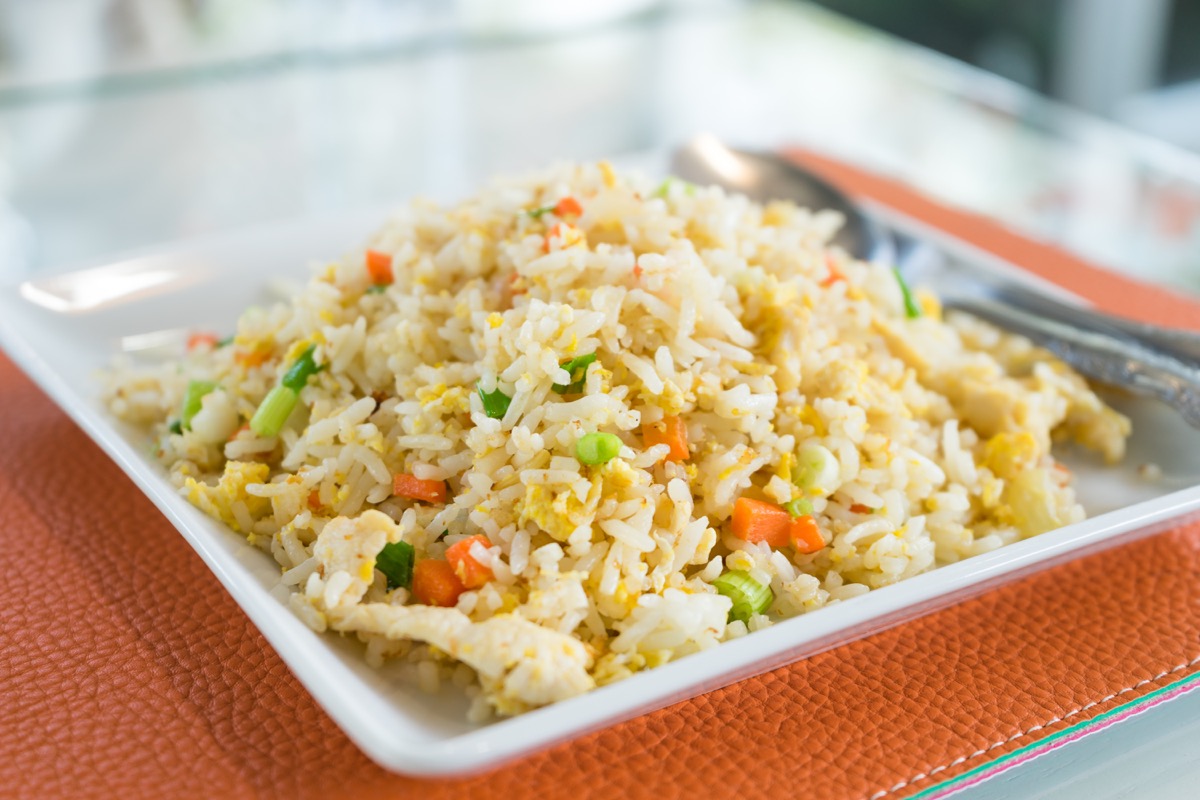Though these foodie adventures are seemingly innocent, harmful bacteria may be lurking insidiously in many culinary options. To help you navigate the culinary landscape abroad, we’ve cobbled together expert advice from those who know best: doctors. Even these experts wouldn’t eat some of the stuff—from berries to bats (yes, bats)—on this list. It should come as no surprise that consuming raw meat and seafood can pose a danger to your gut and overall health while traveling abroad. Uncooked and undercooked meat and seafood can cause health scares even in developed countries like the United States. According to the Centers for Disease Control, any raw cut of meat or seafood, even if it has been “cooked” with citrus juice or vinegar, is always to be avoided on your travels. It’s likely swimming with germs that can pose serious problems to your health—and, worst of all, may delay your travels. Bushmeat—local game like bats, monkeys, or rodents—is another no-go. According to the CDC, these animals often contain diseases like Ebola or Severe Acute Respiratory Syndrome (SARS), which, at their worst, can be life-threatening. If you’re browsing through the meat selection offered by the local street vendors, it’s always a good idea to ask what it is that you’re eating first. As a rule of thumb, any fresh produce without a protective skin that you first must peel off before consuming is not a good idea. Since local water in less-developed countries is often not safe to drink, consuming food that has been washed in this water is also unsafe. Apples are another example of fresh produce that should be avoided at all costs. The only time that you should ever consider eating an apple is when you can wash it yourself with safe drinking water. And to minimize your risk of contagion, be sure to peel it, too.ae0fcc31ae342fd3a1346ebb1f342fcb According to Jane Wilson-Howarth, a physician and author of The Essential Guide to Travel Health, frozen foods pose a few health risks as they sit on the freezer shelf. This “high-risk” preparation is caused by the constant freezing and de-thawing of the food that can produce harmful bacteria. Not only that, but the ice used to freeze these items comes with the risk of contamination. Sauce, according to Wilson-Howarth, is another thing to be wary of while traveling, especially since you don’t know what ingredients it may contain. If you’re not paying attention to the ingredients (if they’re listed), then that’s your first mistake. If you’re not careful, you could be consuming products made with unsafe water or uncooked herbs and eggs that could pose significant threats to your health. If you simply must sample a few local sauces (we don’t blame you), then be sure that they’re thoroughly cooked and still hot. If you have never eaten anything in the crustacean group like shrimp, lobster, and crab, it wouldn’t be a good idea to be adventurous on your trip. For one thing, it would be a bad time to find out about your shellfish allergies while traveling in an unfamiliar country. But on top of that, since shellfish are considered “bottom feeders,” they carry far more bacteria than other seafood selections. If you’d still like to go for it, at the very least make sure that it’s been thoroughly cooked. Pay attention to this rule if you’re planning on traveling to a country with a lot of pollution, as fruits and vegetables are harder to keep clean the lower they grow to the ground, says Wilson-Howarth. If you’re craving a salad with fresh vegetables, opt for packaged items that have not been exposed to any water. But beware: purchasing fruits and vegetables that have already been pre-cut in the supermarket means that preparers have already cleaned the fruit with local water, which may be unsafe to consume. Since food regulations vary from country to country (and many are not as strict as our own), it’s safest to simply steer clear of unpasteurized dairy products; they, according to the Food and Drug Administration, may contain diseases like Salmonella, E. coli, and Listeria, all of which can be life-threatening. In countries like Thailand and Mexico, street vendors have remained an essential part of the culture and cuisine. However, while much of the food offered on the street is perfectly safe, there are certain risks that can be avoided with shrewd attention to detail. While trying to pick out food on the street, there are a few things to look out for. For one, how clean is the stall? If there are bits of food and trash in the stall, get your meal elsewhere. Next, how many people are in line? If there are men, women, and children grabbing food from the vendor, then it’s probably safe. And finally, if any of the meat offered at the stall is not being covered by the cook, then that increases the likelihood that the food is contaminated. Similar to other frozen foods, unfortunately, this travel staple is better left untouched. The only time it may be acceptable to lick some soft serve is when you’re purchasing it from a well-reputed chain or popular shop. Never buy ice cream from small stands with no one in line—this is a definite red flag. If you’re still craving something sweet, Wilson-Howarth recommends going for a fruit sorbet that contains more acid and fewer bacteria. Again, all meat that is not fresh off the grill is not a safe bet for your delicate American stomach, according to David L. Roque, a family medicine physician and travel-medicine specialist at Swedish Covenant Hospital and Roque-Ponton Medical Group S.C. in Chicago. “When you’re traveling, you should only eat fully cooked, hot, steaming food,” he tells The Washington Post. Further, any cheese left out in deli cases are carrying bacteria that you don’t want to mess with. Similar to street vendors, there are certain situations that present red flags while wining and dining abroad. If the restaurant is empty even during peak hours, there’s probably a reason—and you shouldn’t stick around to find out what that reason may be. Head to restaurants that have an international or national following, or are popular with the locals. Unlike street vendors, you can’t actually watch the cooks prepare your food. Buffets are yet another breeding ground for unwanted bacteria. The longer food sits out, the more bacteria cling to the meal you’re about to ingest. Skip these places altogether. Not only will you save yourself from a week of throwing up into foreign toilets, but you’ll also save avoid hundreds of unneeded calories. We should all be more vigilant about where we get our salad from, especially since the latest E. coli outbreak in the United States was traced back to romaine lettuce. While it is best to avoid salad while traveling abroad, if you must get a healthy meal fix, opt to purchase pre-packaged that hasn’t touched any local water source, since fresh lettuce always carries the risk of contamination. Because most fried rice is made with bits of cooked meat, the chances of picking up bacteria and disease increases as the meat is left over and then flash-fried, says Wilson-Howarth. Opt instead for a safer staple like hot broth. “It’s very refreshing and it’s safer. It gives you energy and it hydrates,” she says. The CDC maintains that all travelers in foreign countries with a questionable water source should stick with bottled water at all times. If you need to use local water, make sure you boil it beforehand. The following countries are known to have the worst drinking water in the world: Mexico, Congo, Pakistan, Ghana, Nepal, Cambodia, Nigeria, China, Russia, Turkey, and the entire continent of South America. Most restaurants make their fountain drinks using local tap water, so your choice of soft drink is best served in a can while traveling abroad. Since water comes from ice, this one should come as no surprise. When you’re ordering whiskey abroad, be sure to take it neat. And for more ways to avoid being sidelined while vacationing, check out these 30 Smart Ways to Avoid Getting Sick When You Travel.




